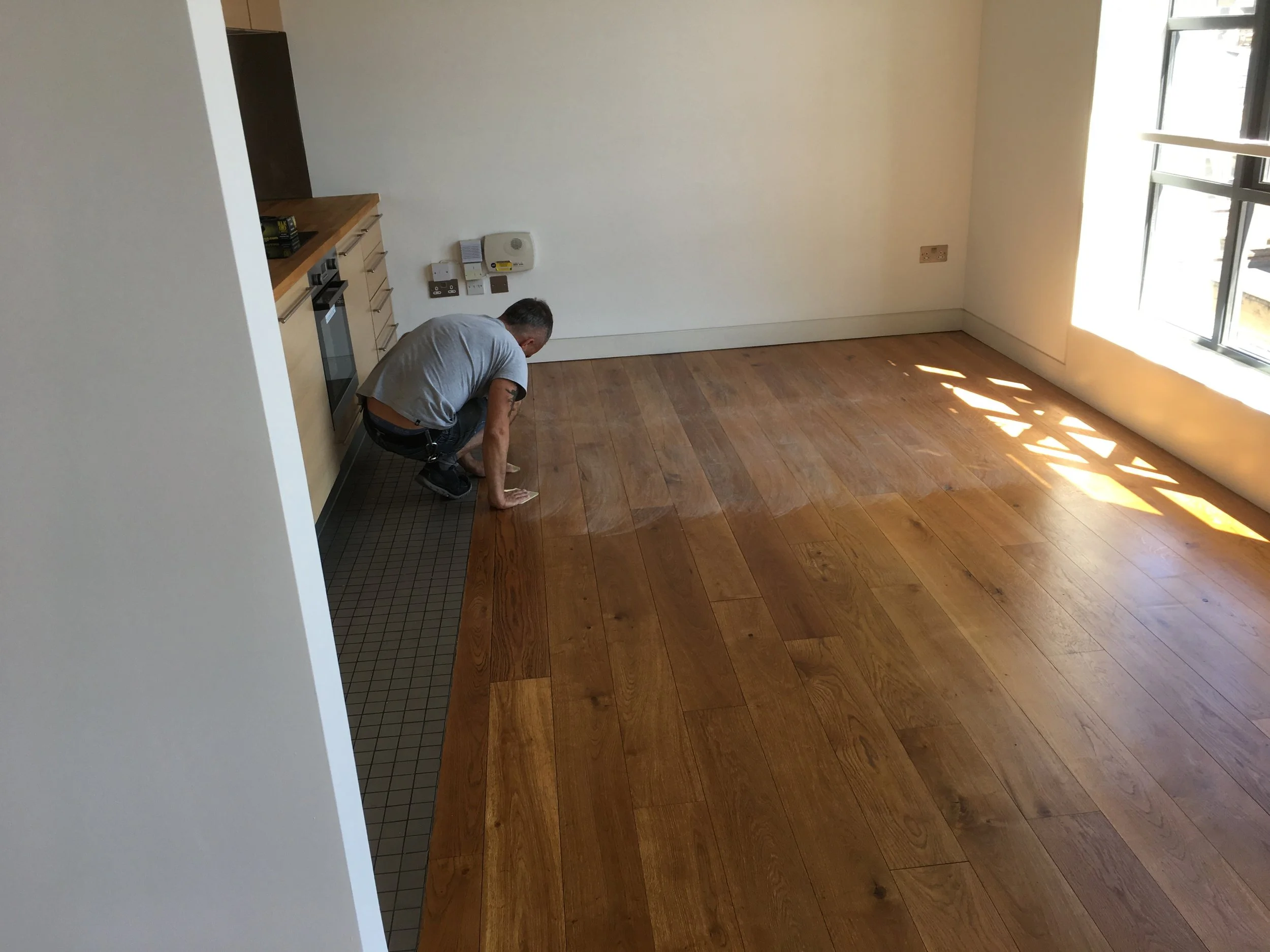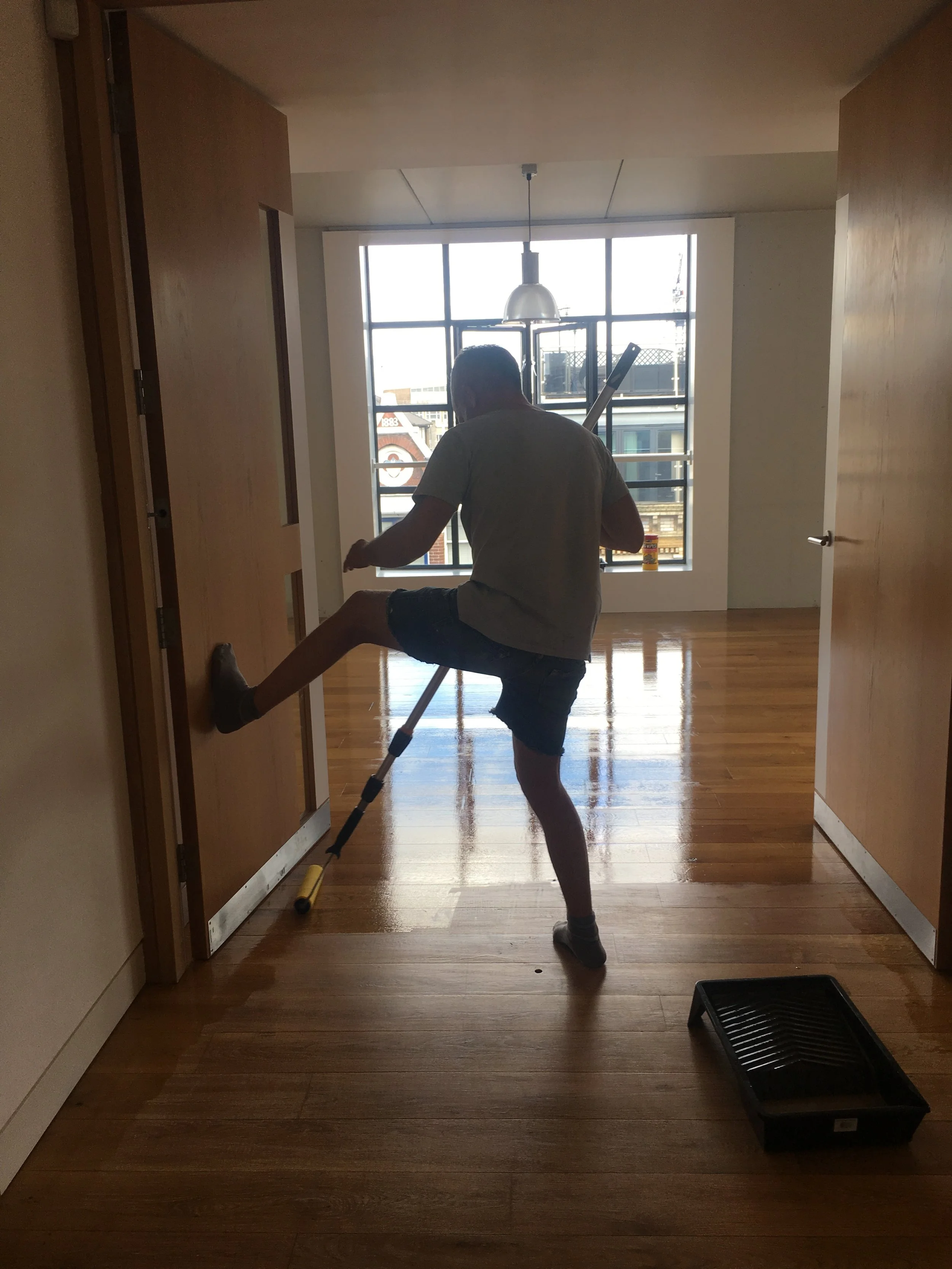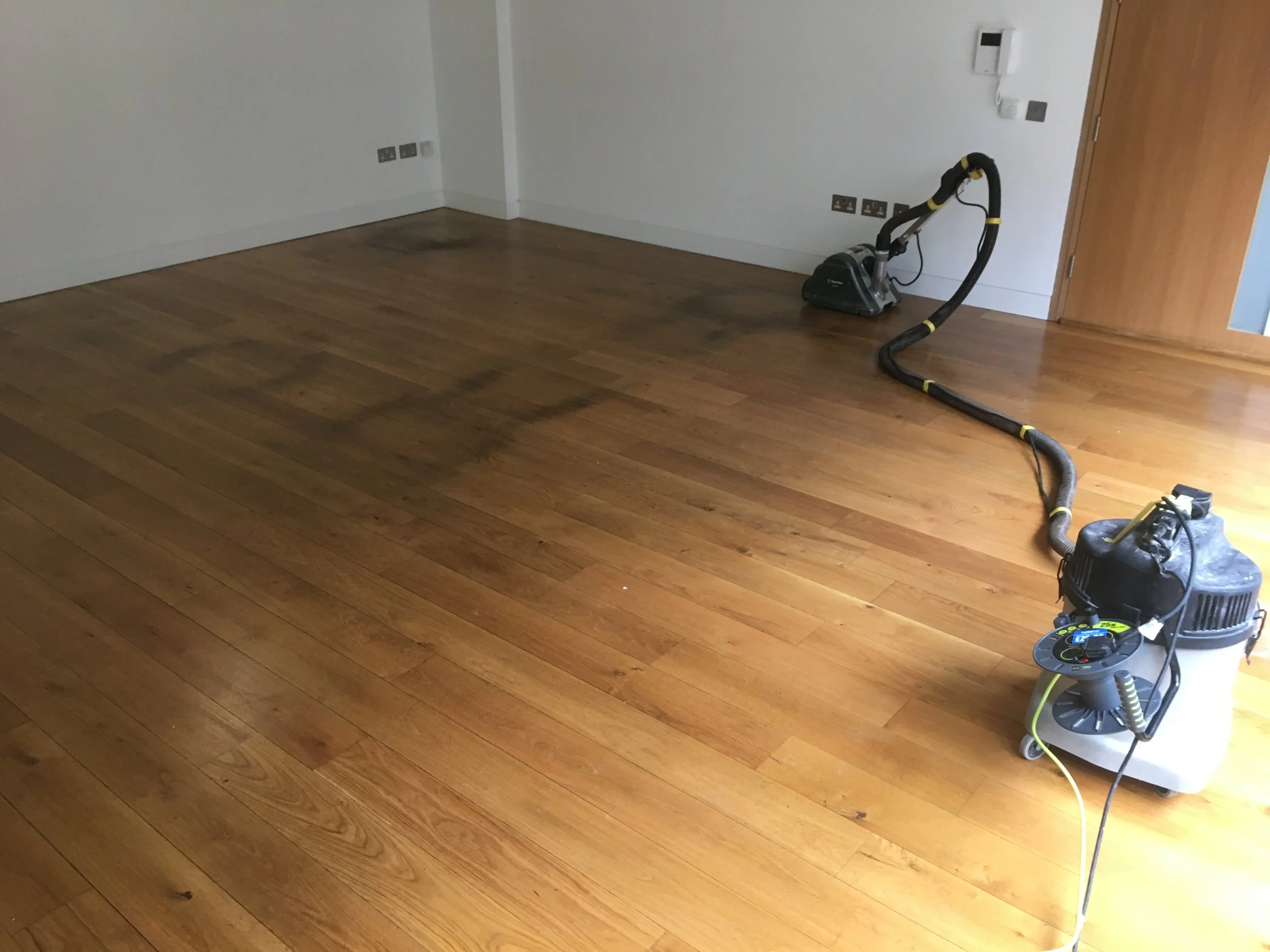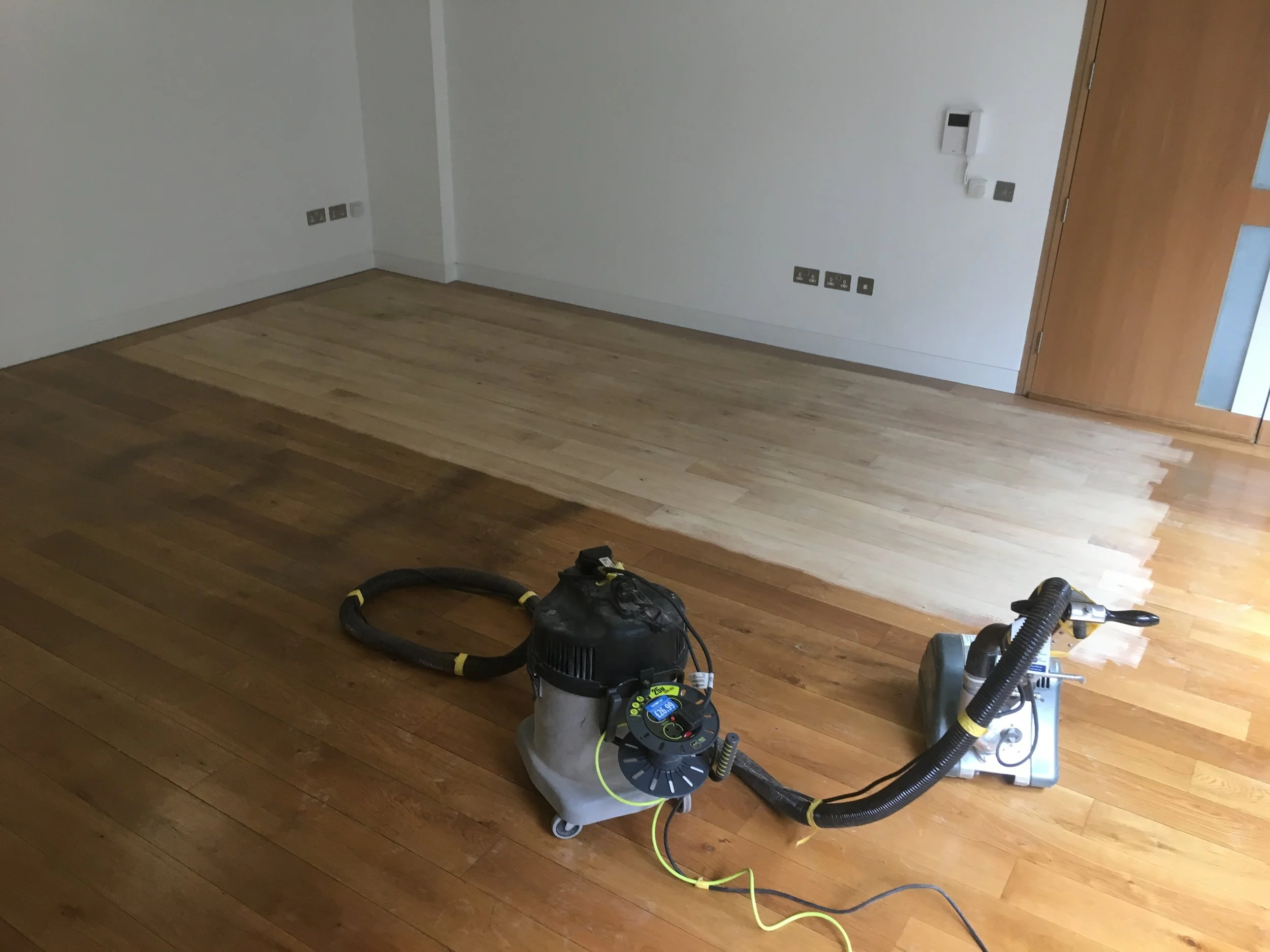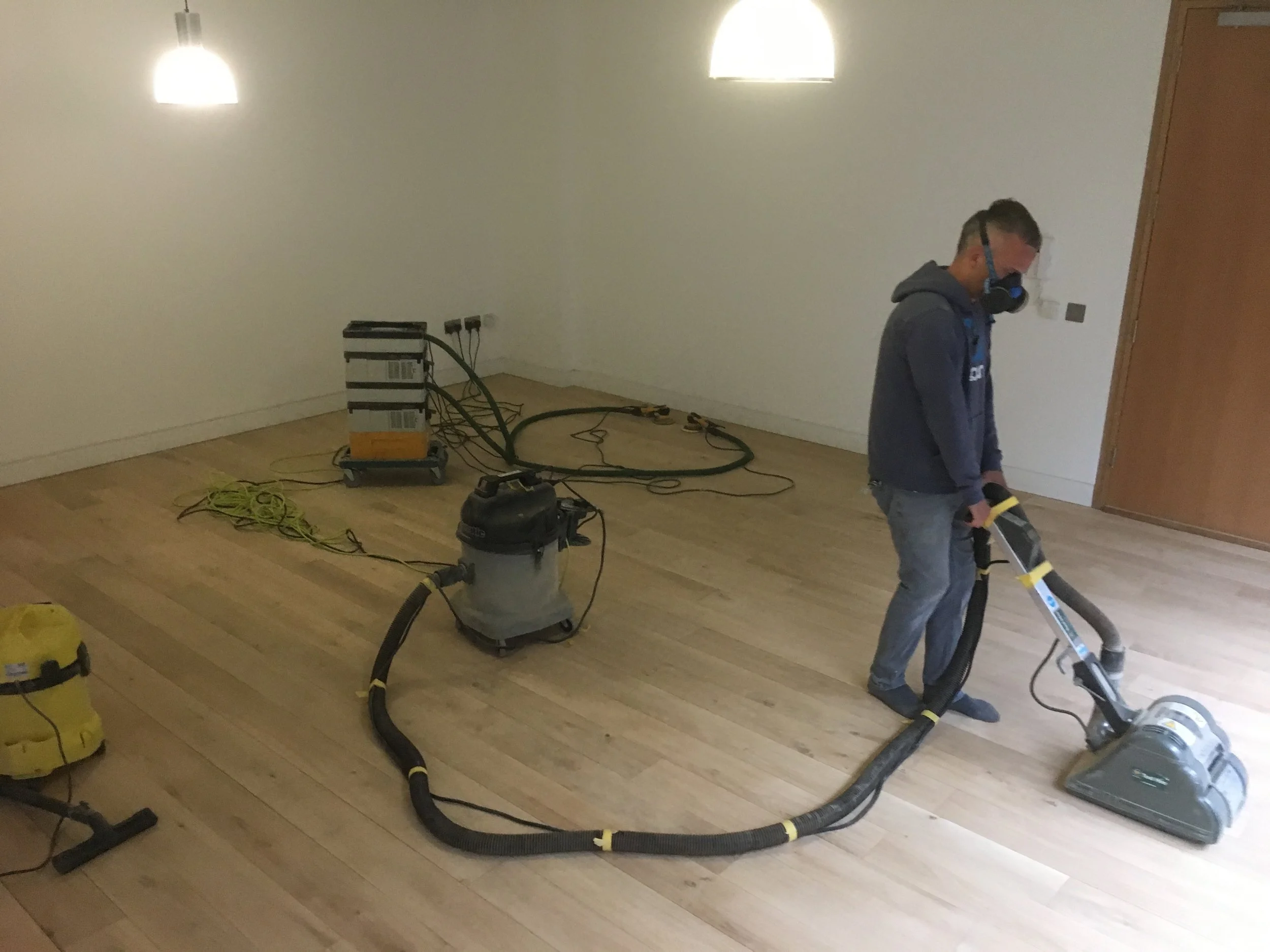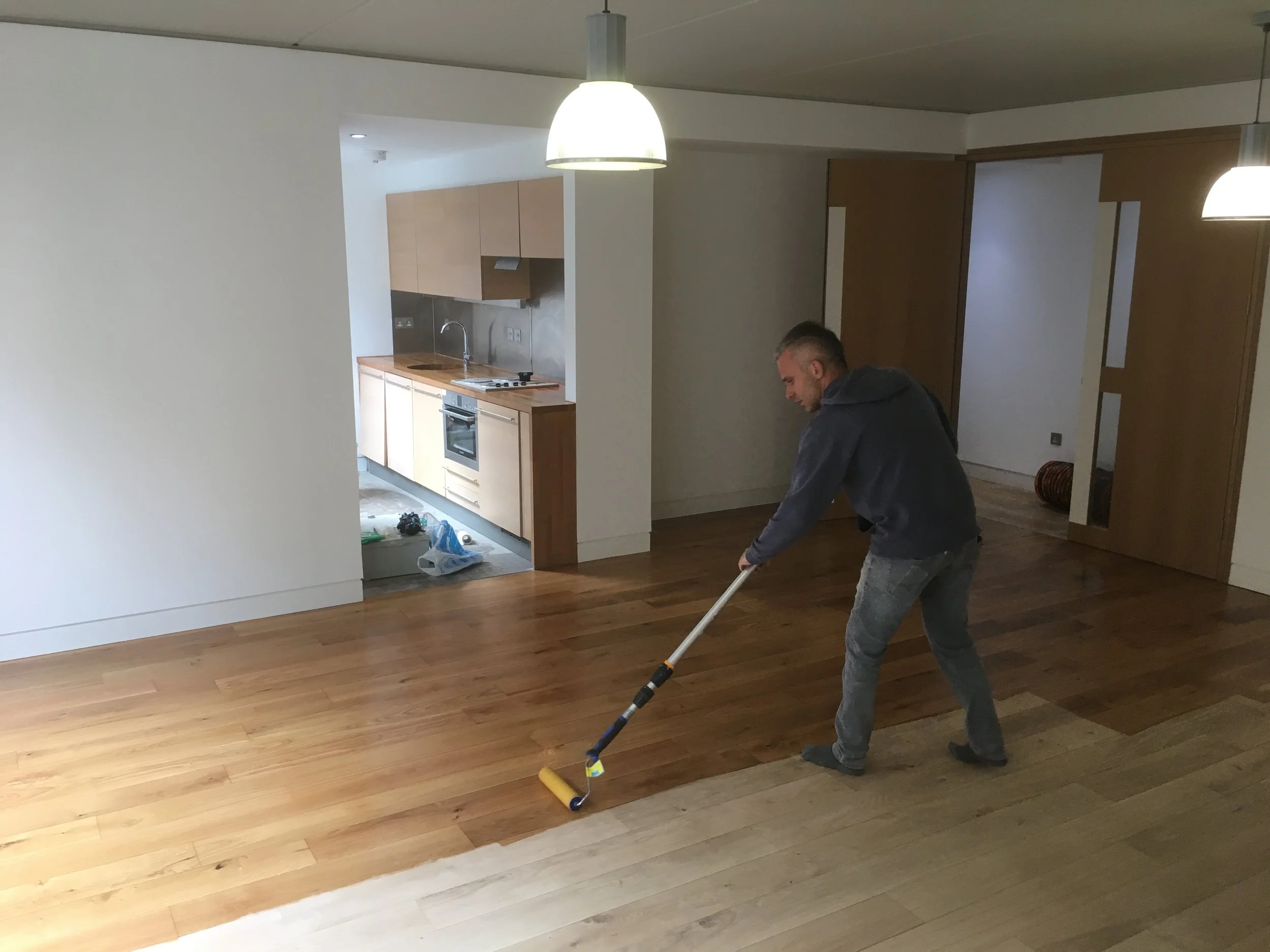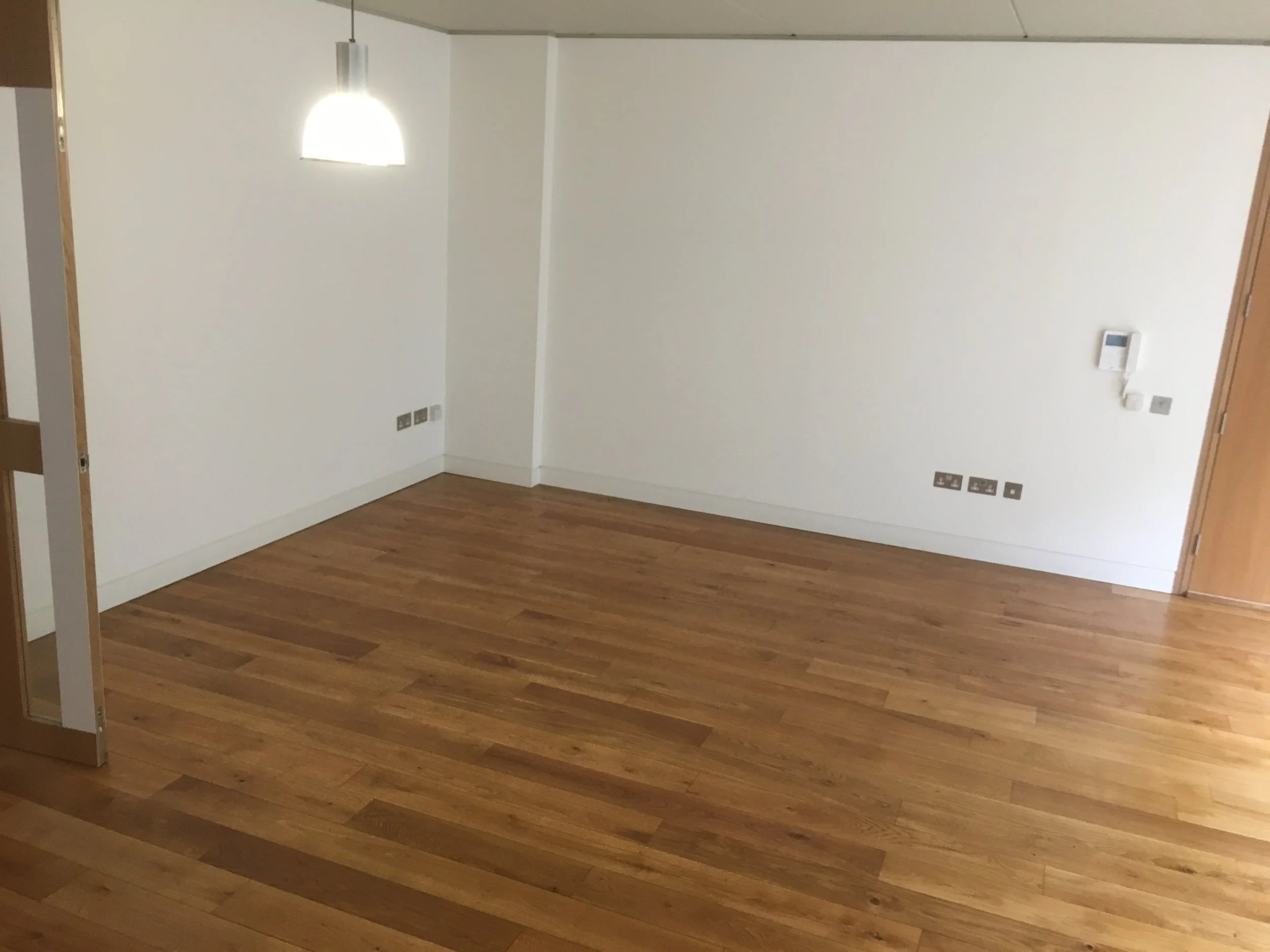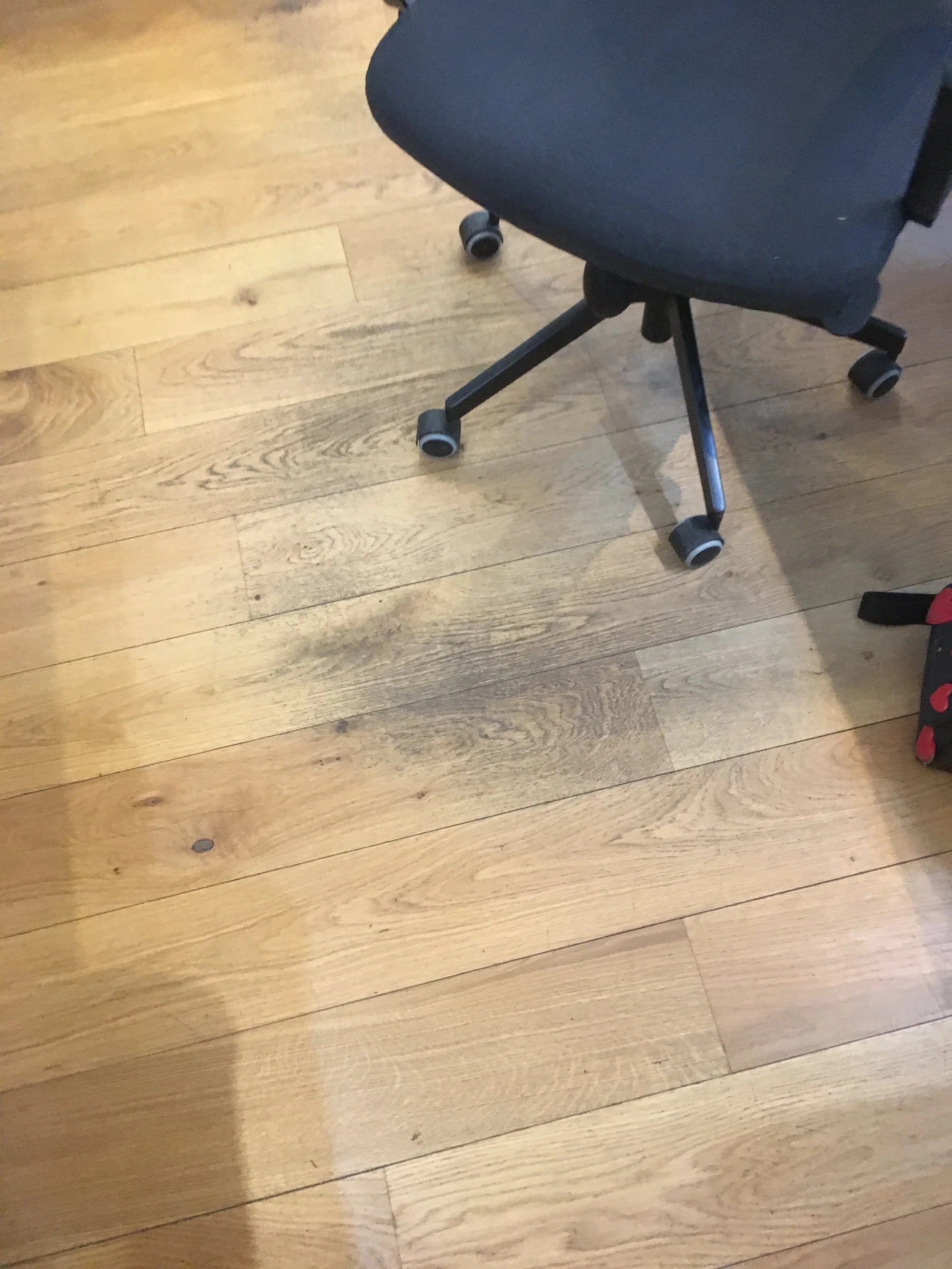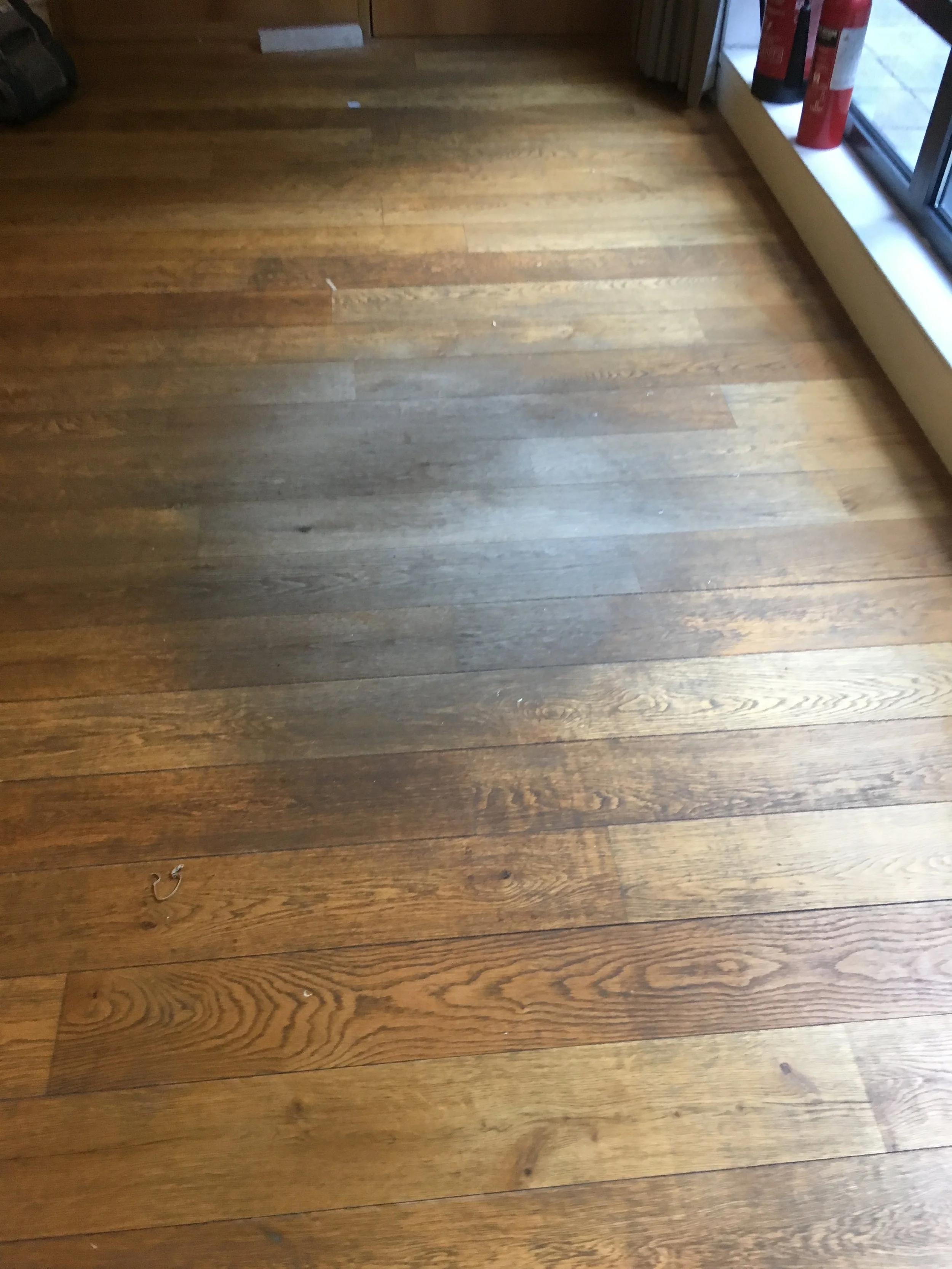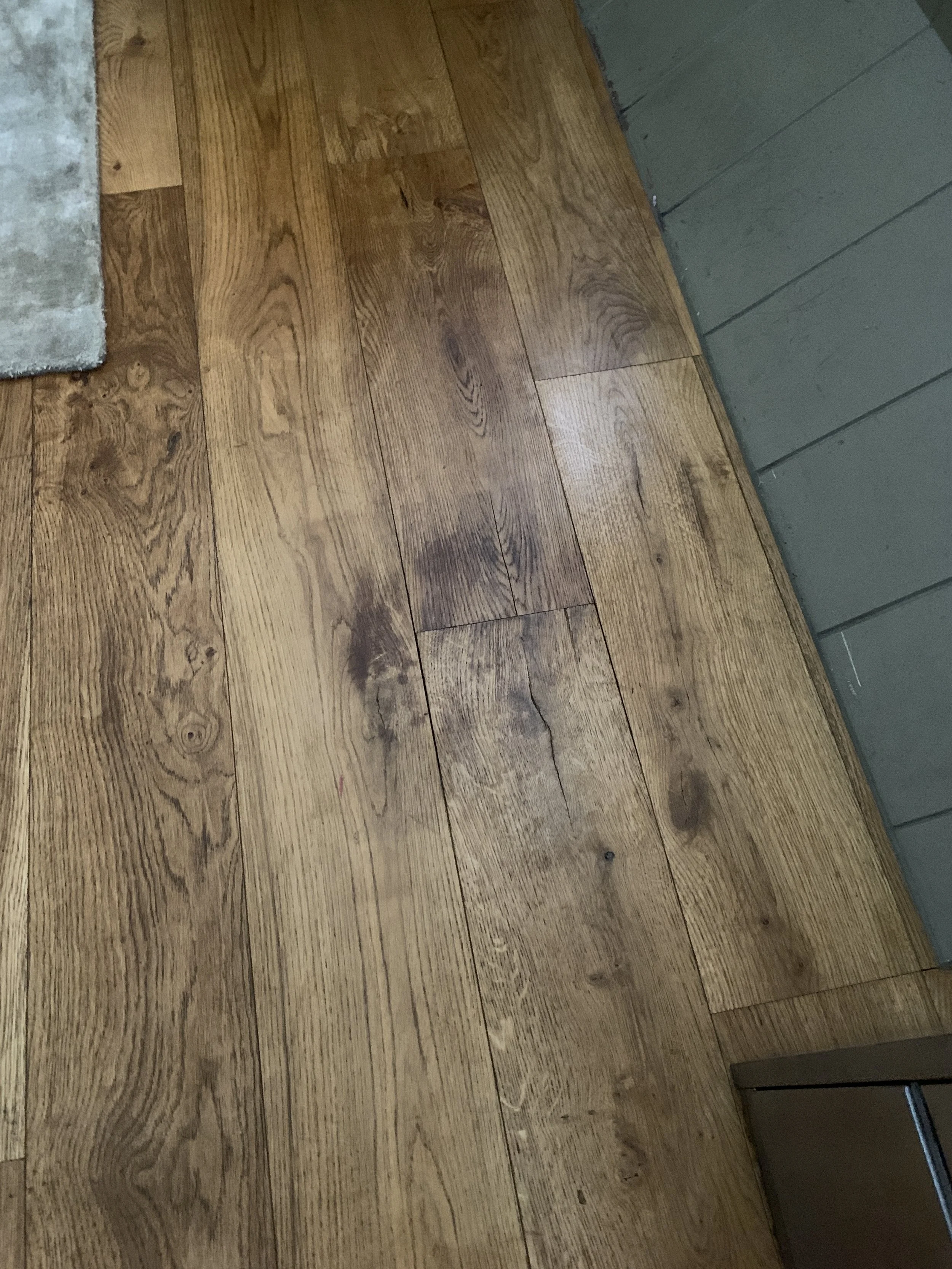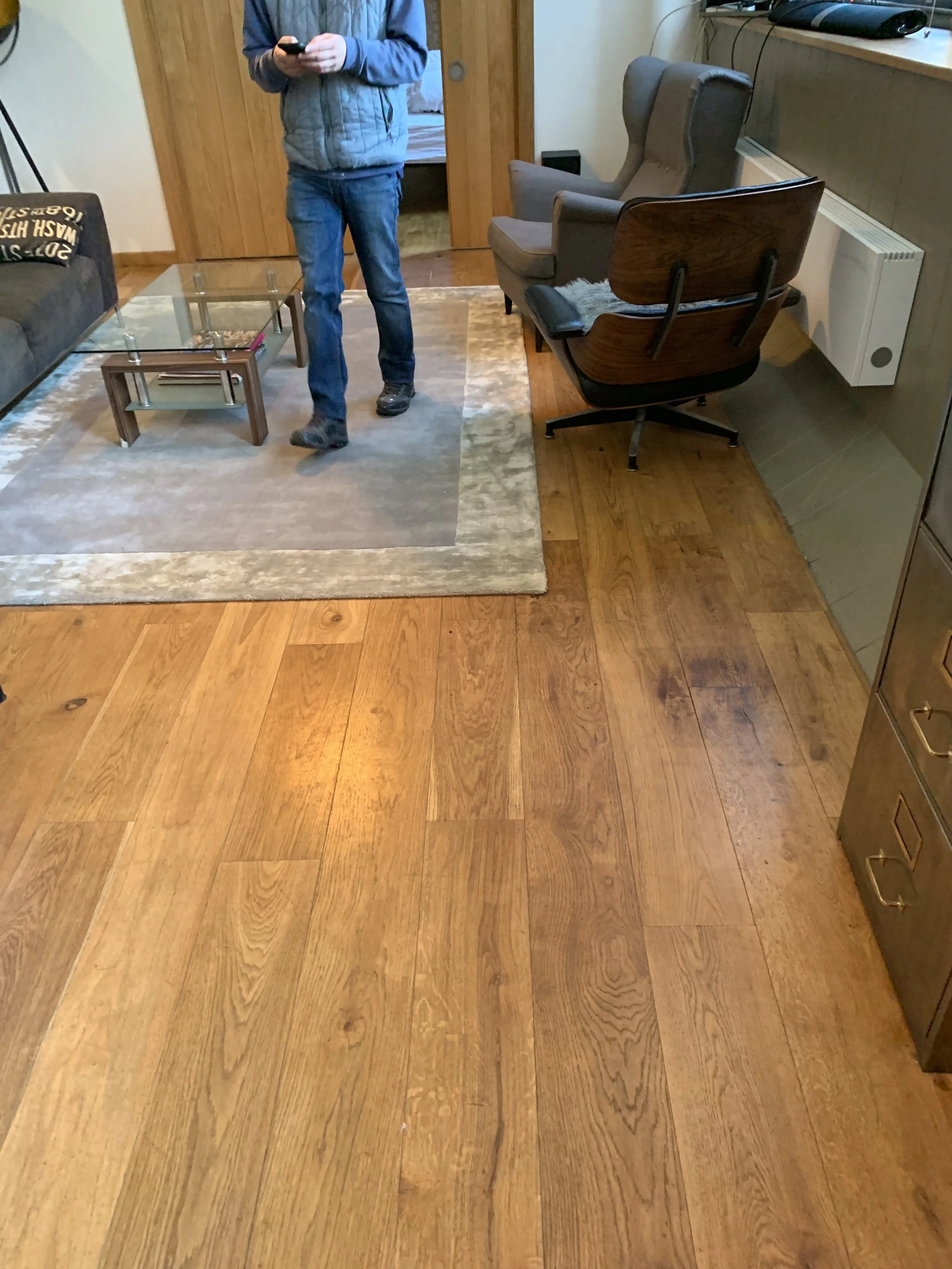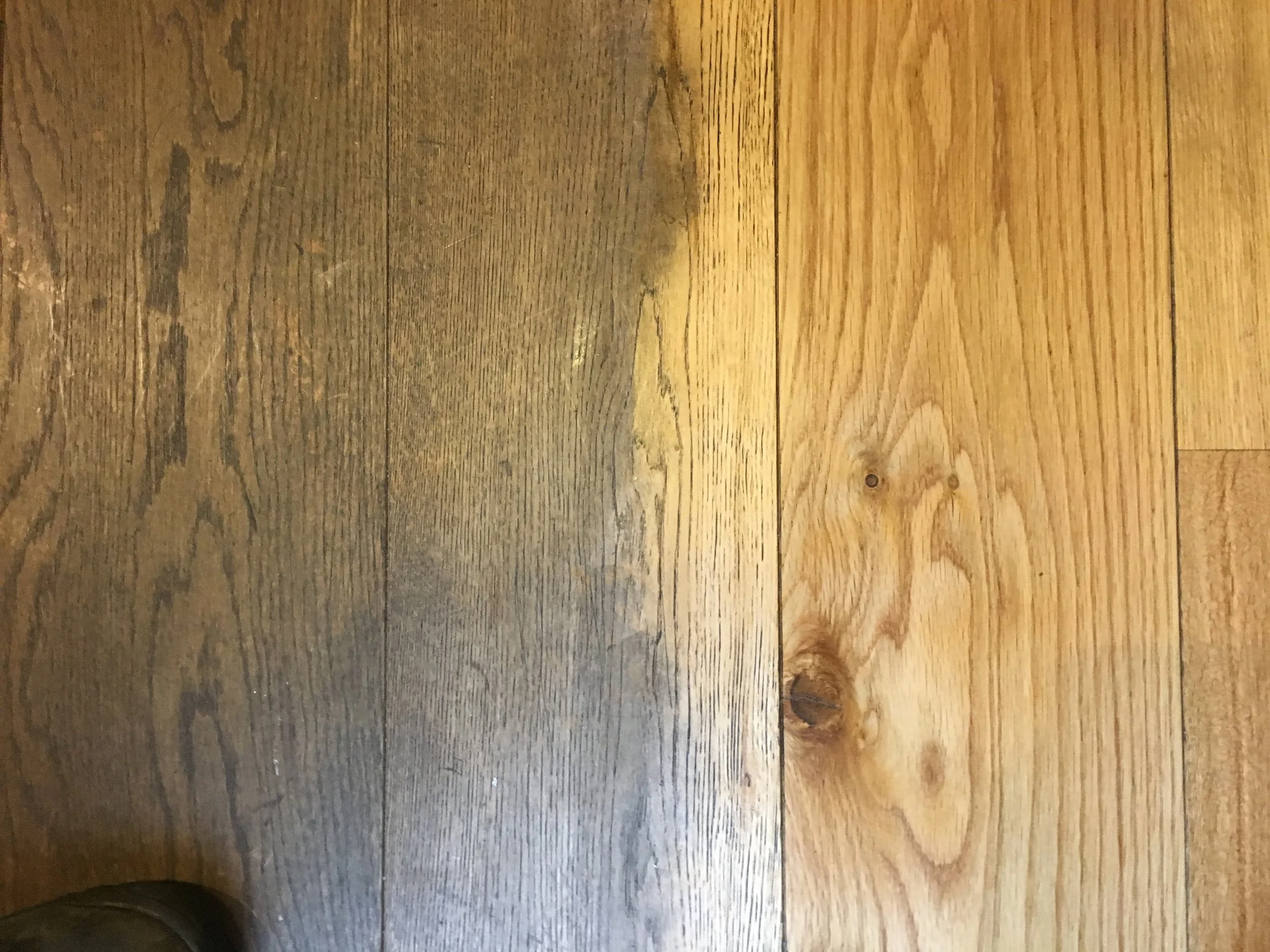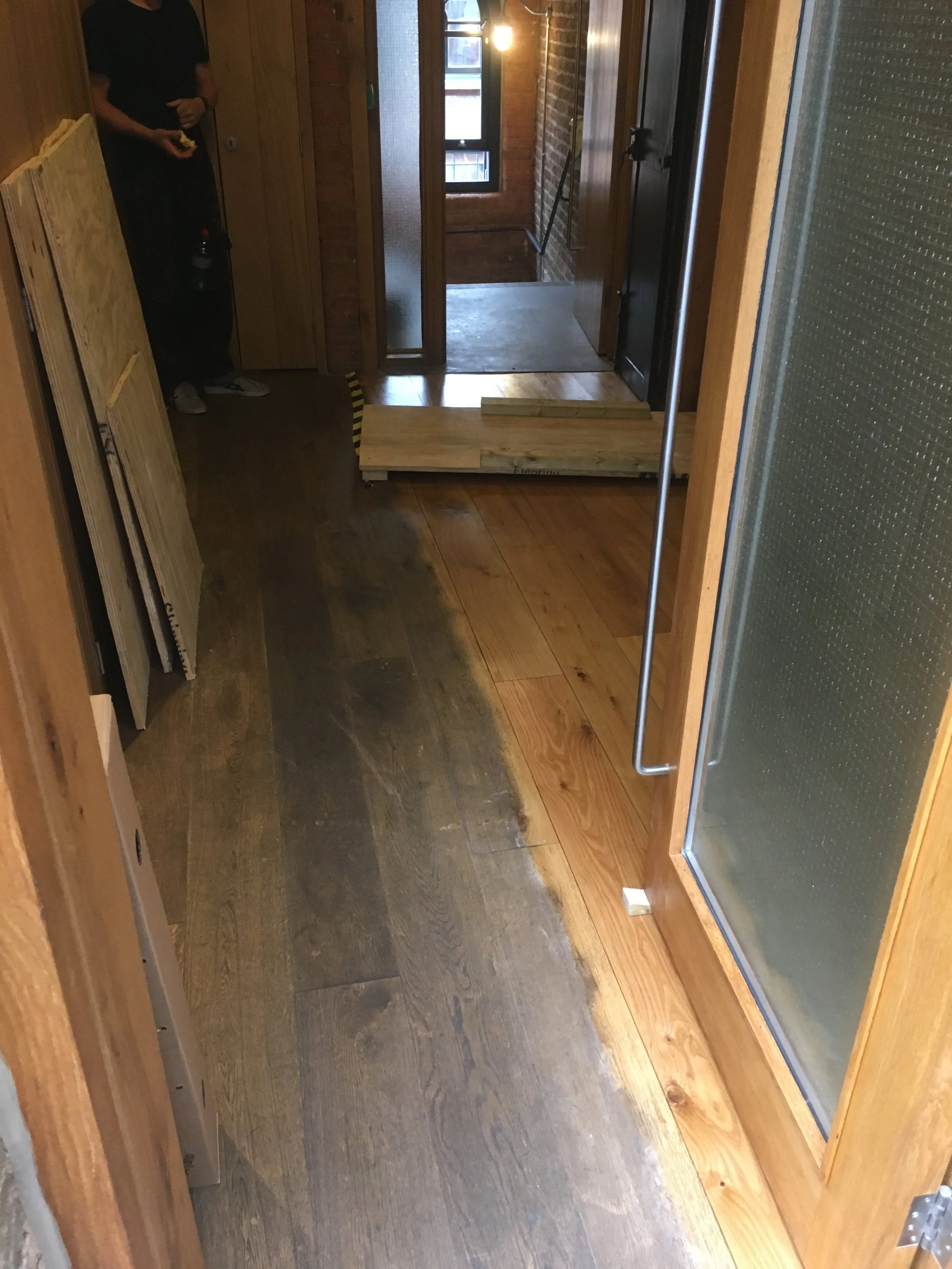“Fair wear and tear” is a common phrase used in tenancy agreements, a grey area that really lacks the definition needed to avoid parting with your deposit (if you’re a tenant) or avoid large renovation costs (if you’re a landlord).
With regards to an Osmo oiled wooden floor “fair wear and tear” commonly constitutes light surface scuffs and marking. At the end of the tenancy this requires little more than a light hand sand with 180 grit sandpaper (in the direction of the wood grain) and application of Oil for continued protection.
Damage to the floor can arise from many things: dragging tables or heavy furniture, inappropriate or soiled footwear, the hard wheels of rolling office chairs, standing liquid from: spills, flower pots, open windows, conventional wet mopping, caustic liquid (such as detergents), dark penetrating liquids (like red wine or coffee.) etc.
Please be aware wooden floors treated with Osmo should not be mopped with a conventional mop, only a slightly damp flat mop should be used. Wet mopping a worn floor will accelerate damage, as will the use of detergents therefore a coat of oil should be applied as part of a cleaning schedule. For a product like Osmo or Bona they will have their own cleaning recommendations including what products are best to use to avoid stripping away the protection / dehydrating the floor.
Should a floor not be properly maintained, either by lack of care, or absence of correct cleaning then the floor can be reconditioned. To bring the floor back to a good standard requires heavy duty drum sanders (see below.) Many solid wood or engineered wood floors can only be sanded a limited number of times (depending of level of wear) before they need to be replaced. Each drum sanding can take anywhere from half a mm to 3mm each time. If you’ve suffered a leak (from a washing machine for example) and this water has been left to stand for a while this can cause the boards to warp (twist and cup) meaning more drum sanding is required to flatten out the boards. In some cases drum sanding would not be possible and a section of flooring will need to be replaced.
The most common cause of damage is office chairs – which over time will wreck even the toughest hardwood floors (including the “diamond hard” epoxy finishes). Consider using carpets, mats, felt pads or ‘furniture coasters.’ Some people recommend replacing the chair’s casters for polyurethane (soft PU) tread which is softer than nylon and may help prevent scratching.
Roller chairs
Chair legs – use felt pads
Plant pots / spills / detergents (stains can penetrate deep into the timber)
Frequent wet mopping vs new
Over time wet mopping (with or without detergents) strips away the protective coatings allowing dirt to draw deep into the grain.
All floors viewing in these pictures are ‘engineered boards’. That is 13mm of plywood with a 5mm veneer of oak. This boards are structurally stable and not as prone to twisting or cupping as solid timber boards. I have witnessed some pretty bad washing machine leaks on these floors yet they have survived.
The floors have been treated with 2 coats Osmo Polyx Oil (3232) rolled on with foam roller.
Tenants are given Osmo wash and care (8016) for their regular cleaning and Osmo liquid wax cleaner (3029) for intensive cleaning. + care pack with instructions.
The views in this article are my own and I’m not sponsored by anyone to say anything.

